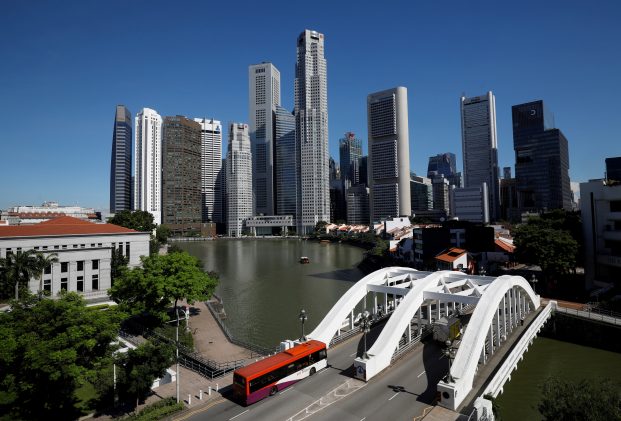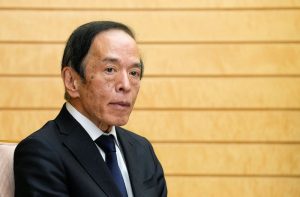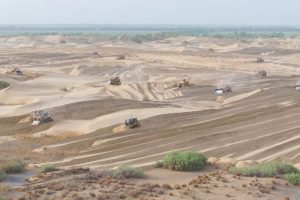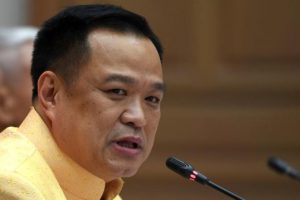(ATF) In a good omen for a global economic recovery, Singapore expects to return to growth next year as the city state made a strong third quarter performance powered by pharmaceuticals and electronics.
Singapore’s gross domestic product (GDP) fell 5.8% year-on-year in the third quarter, the Ministry of Trade and Industry said on Monday, smaller than the 7% drop seen in the government’s advance estimate.
The ministry said trade-related services sectors would benefit from the pickup in external demand, while aviation and tourism-related sectors would see a recovery in passenger volumes and visitor arrivals.
But the ministry warned in a statement that “economic activity in these sectors is not likely to return to pre-Covid-19 levels even by end-2021”. The government said it now expects full-year GDP to contract between 6.5% and 6% versus its prior forecast for a 5-7% decline. The economy is expected to grow 4-6% next year, it said.
“Q3 marks a strong start to the recovery and GDP should continue to rebound over the coming quarters,” said Alex Holmes, Asia economist at Capital Economics. Holmes was more upbeat than the ministry and expects the economy to grow 7.5% in 2021.
“The country should continue to benefit from buoyant global demand in key industries such as pharmaceuticals and electronics,” he said. “This should carry on over the coming quarters as vaccine production boosts demand for active pharmaceutical ingredients, while global investment in data centres and 5G infrastructure supports demand for electronics.”
Barclays forecast GDP growth declining further to 2.5% year-on-year in the fourth quarter on continued economic recovery, helped by the containment of the Covid-19 outbreak, including in dormitories, where many of Singapore’s 1.3 million foreign workers live.
“Domestically, Singapore’s relatively small population and efficient healthcare system should help with vaccine distribution, allowing for a swifter reopening of international borders, especially as Covid-19 infections have slowed to a trickle,” Barclays economist Brian Tan said.
The bank was more conservative in its forecast for 2021. It expects GDP growth of 4%, at the bottom of the ministry’s forecast range.
Surge in industrial output
Singapore’s manufacturing sector has been the main driver of growth, particularly given a 24.2% surge in industrial output in September, which has contributed significantly to the upward revision in the headline growth figures, DBS analysts said.
“The global electronics cycle is picking up strongly as companies worldwide turned to digital solutions to overcome the disruptions to business processes, and the ‘work from home’ phenomenon has also spurred fresh demand for electronic gadgets,” Irvin Seah, a DBS economist, said in a note.
He said that further adoption of 5G networks and WiFi 6, on top of the continued proliferation of artificial intelligence, the internet of things, electric vehicles and introduction of new smartphone models and wearable devices will continue to drive demand for high-end electronics parts and components.
All these will bode well for Singapore’s electronics cluster heading into 2021. And with demand for biomedical products expected to remain strong in the coming quarters, outlook for the manufacturing sector will remain optimistic in 2021.
The country has spent about S$100 billion, or 20% of its GDP, on virus-related relief to support households and businesses as to battle its worst slowdown.
In 2021, DBS expects its growth performance to be above potential as the recovery gains momentum in the second half of next year, “assuming that vaccines will become available and global travel can safely resume thereafter”. It reiterated its growth forecast of 5.5% for next year.
Singapore has reported more than 58,000 cases of Covid-19 mainly due to mass outbreaks in migrant worker dormitories. But locally transmitted infections have dropped to zero in recent days, with most of the new cases being imported.
Edward Robinson, deputy managing director of the Monetary Authority of Singapore, the country’s central bank, told a media briefing current policy settings remained appropriate.
The Authority left monetary policy unchanged at its last meeting in October and said its accommodative stance would remain appropriate for some time.
























